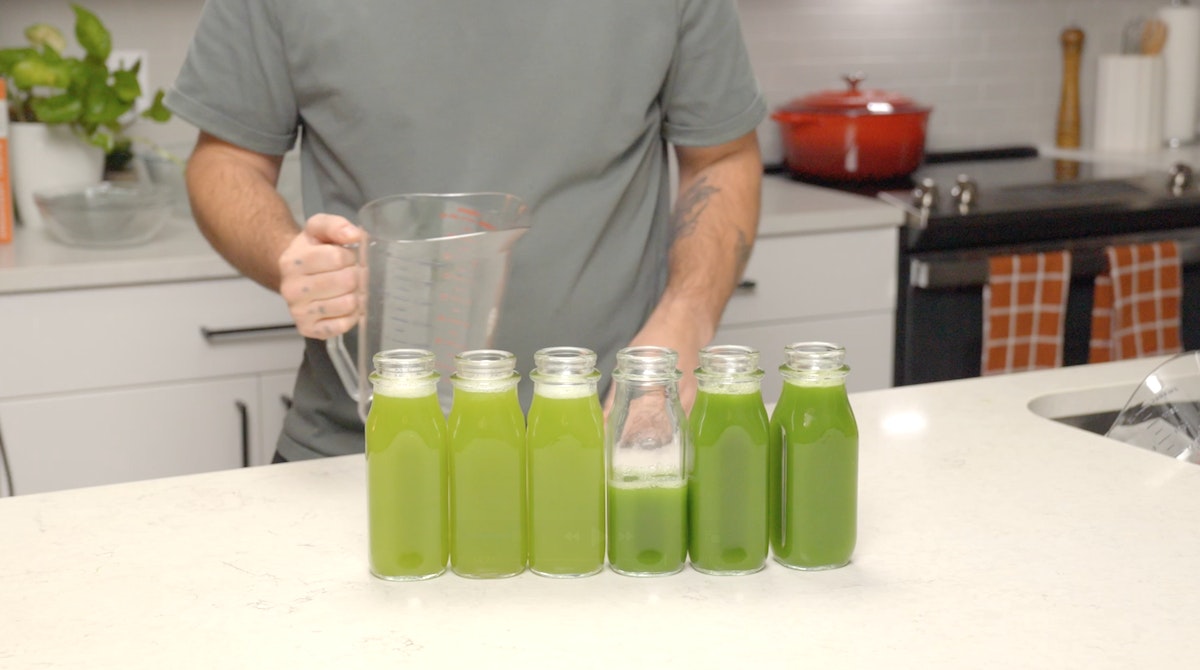You're probably reading this because you've decided to upgrade from a masticating juicer like Nama or Kuvings brand to a genuine Goodnature juice press. First of all, congratulations! Whether you're juicing for a business or your own family at home, everyone is going to love higher quality juice. You've made a great decision!
There are some important differences that come along with making the switch that you should be aware of, and plan for, to help ensure the transition goes smoothly. First, I will give an overview of the differences in juice quality then I will highlight the main things to be aware of for a successful transition.
Juice Quality Differences
- Higher yield
You will extract more juice with a Goodnature juicer than a masticating juicer on many common items like apples, celery, carrots, and more. That means not only will you save money on produce, but you will extract more nutrients per pound of produce, making the most of what nature has provided for us. - Less separation and longer shelf life.
The two-step process in a Goodnature juicer (grinding then pressing) introduces less oxidation than a masticating a juicer. The reason is that a masticating juicer extracts juice by grinding against a mesh screen, which introduces a lot of air into the juice. You can see it by the amount of foam that is produced, and the quick separation into multiple layers. Goodnature juice will have very little separation, and can last up to 7 days in a refrigerator without any extra additives or processing (like vacuum sealing). - Naturally sweeter and smoother juice
A masticating juicer can contain up to 30% solids in the juice, which leads to a grainy mouthfeel and more bitter taste, since the tiny bits of skin, seeds, and more affect the juice. Solids in Goodnature juice are less than 1% of the volume. This allows your body to absorb the nutrients more easily without breaking down insoluble fiber, and leads to clean , smooth juice that can last up to 7 days or more in a refrigerator (depending on the recipe and temperature). This change means your recipes will not taste exactly the same (see #4 below).
Prepping Produce for Hummingbird
Planning for the Transition
There are some things that may change in your workflow and recipes while making the transition, here are some key things to consider:
- Less cutting produce.
On a masticating juicer, you're probably used to cutting things like ginger and celery into small pieces so they don't clog the juicer. You do not need to worry about this at all with a Goodnature juicer. If you're transition to the Hummingbird juicer, we recommend cutting items in long slices, not small chunks. For long items like celery stalks and carrots, you don't need to cut them at all. - No removing seeds.
You don't need to worry about removing seeds from most items since all the pulp gets filtered out in the press bag and the seeds will not damage the machine. This goes for apples, lemons, and more. Note that you would still need to de-pit things like cherries or peaches. - Less peeling.
You also don't need to remove skin from pineapple, which is a huge bonus. Pineapple skin contains a ton of nutrients in the core and skin (like the bromelain enzyme). We still recommend peeling citrus since the skin oil is quite bitter. - Flavor changes
Since there is less pulp in the juice, there will be a noticeable difference in flavor. We often hear this feedback in regards to items like ginger and herbs. These items specifically taste very strong in a masticating juicer compared to a real juice press. You may want to consider increasing the amount of these items in the recipe, or decreasing the amount of other items. Remember, you're getting higher yield, so there is more juice from less produce.Pro tip: An important note in our testing is that the flavor is much more stable coming from a Goodnature juicer. In other words, the ginger will be just as strong on day five as day one. On a masticating juicer, the flavor changes over time and becomes weaker.
- Optimized labor time
Using a Goodnature juicer offers you plenty of downtime while the machine is doing the hard work. Once you're done grinding and hit the "Press" button, you will have about four minutes to do other things around the kitchen, whether that be prepping the next recipe, bottling juices, or starting cleanup. Make use of this time! Don't just sit around and wait. Hummingbird will give you a nice countdown timer and let you know when it's done. Once you dial in the process, you may be surprised at how productive you can be in a short amount of time when compared to a masticating juicer. Even the masticating juicers that offer large hoppers still require substantially more time at the juicer than using a Goodnature juice press. - Mushy ingredients
It's important to understand the mushy spectrum in regards to using a real juice press. Recipes that contain mostly "mushy" ingredients like mango, pineapple, or berries should be pressed in smaller batches to avoid press overflow. Check out this video for a complete explanation: Avoiding Press Overflow and Achieving Maximum Juice Per Hour.
As final thought here, if you're making the change in a juicing business, please make sure to leave time for recipe testing. Going from a masticating juicer to a real juice press is like going from drip coffee to espresso. It's different! If you'd like hands-on assistance, Goodnature offers the industry's best juice business consulting services and we have helped dozens of juice companies make the change successfully, and Chef Ari offers a free 30 minute consultation to answer any preliminary questions for you.


Comment